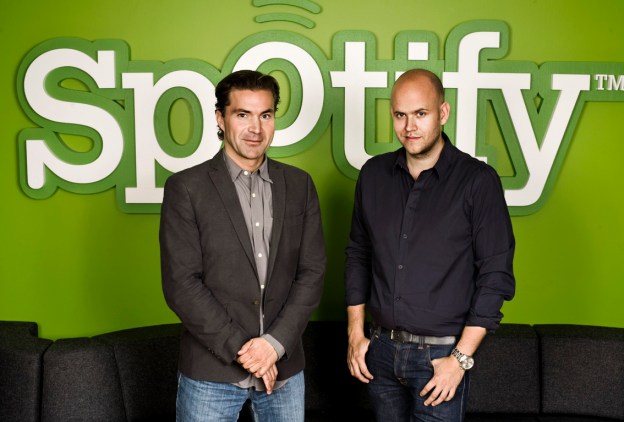 Spotify launched in the United States a week ago on an invite-only basis, and has been getting a lot of coverage recently, including some rave reviews. The streaming music service can be used for free with ads, but also offers two paid subscription options that start at $4.99. Despite hurdles to sign up, in the time Spotify has been available in the United States, Billboard now claims that 70,000 users have signed up for a paid subscription.
Spotify launched in the United States a week ago on an invite-only basis, and has been getting a lot of coverage recently, including some rave reviews. The streaming music service can be used for free with ads, but also offers two paid subscription options that start at $4.99. Despite hurdles to sign up, in the time Spotify has been available in the United States, Billboard now claims that 70,000 users have signed up for a paid subscription.
The main draws to having a paid subscription would be the removal of ads between songs, unlimited play time, and the ability to listen to the service on your mobile device.
It’s hard to judge just how successful of a launch Spotify is experiencing since all of its closest competitors have been on the market for years. For example, Rhapsody has around 800,000 paid users, but it launched in 2001. Napster was reported to have 761,000 subscribers before it was bought by Best Buy in 2008. Fellow newcomer Rdio is reported to have fewer than 100,000 paid users , so Spotify did a great job of playing catch up in a single week.
In a recent comparison conducted by Digital Trends, we found Spotify to be the most well-rounded service out of Pandora, Spotify, and Grooveshark. Even with a bug, Spotify was able to barely pass Grooveshark in our comparison, winning three of the six categories. The bug has to do with users losing their “starred” songs, which is annoying but is not a game breaking bug. The overall product is still very solid, and it is easy to see why the service has become so popular so quickly.


